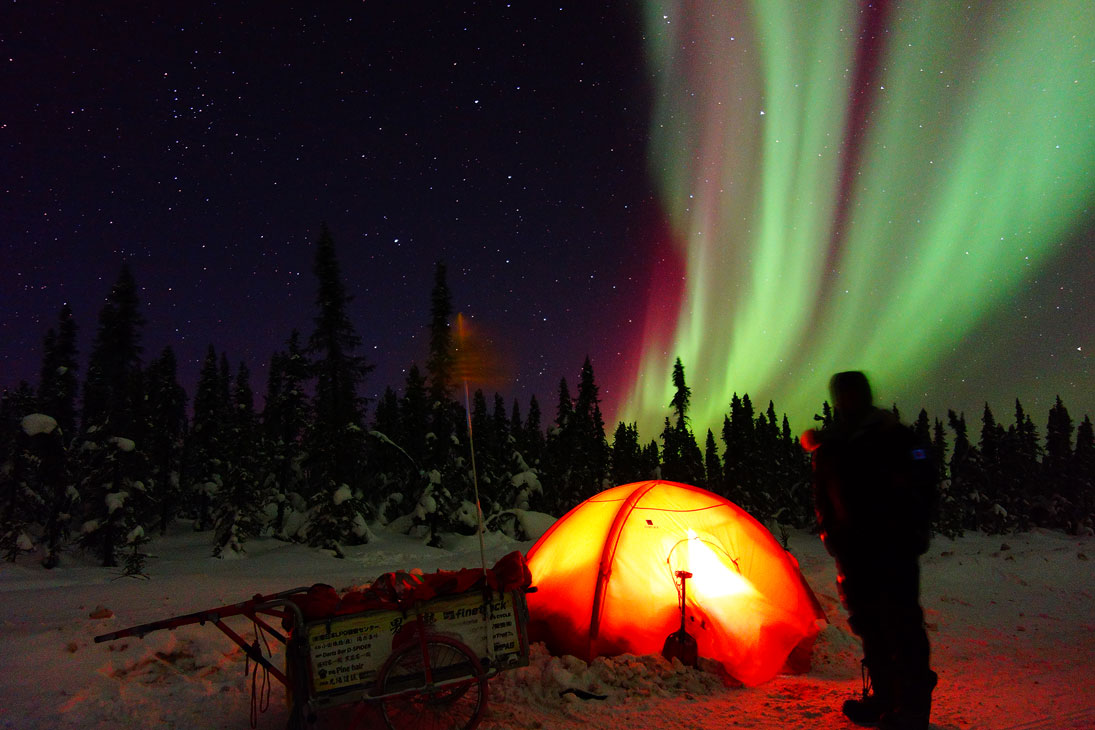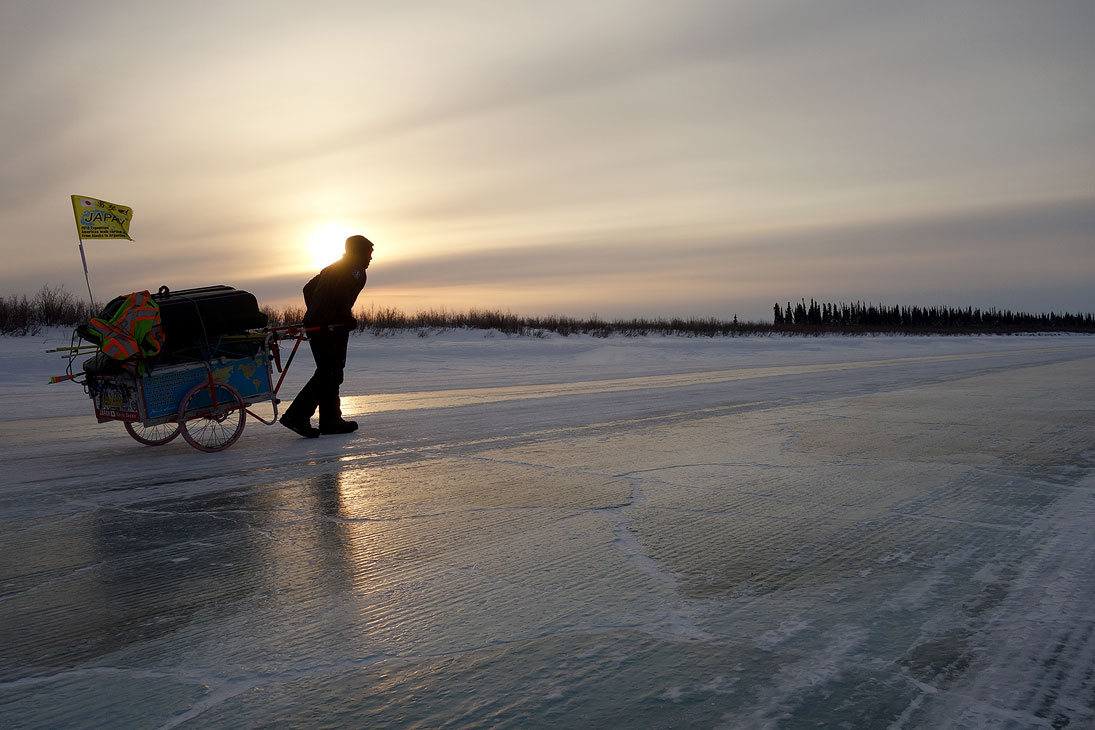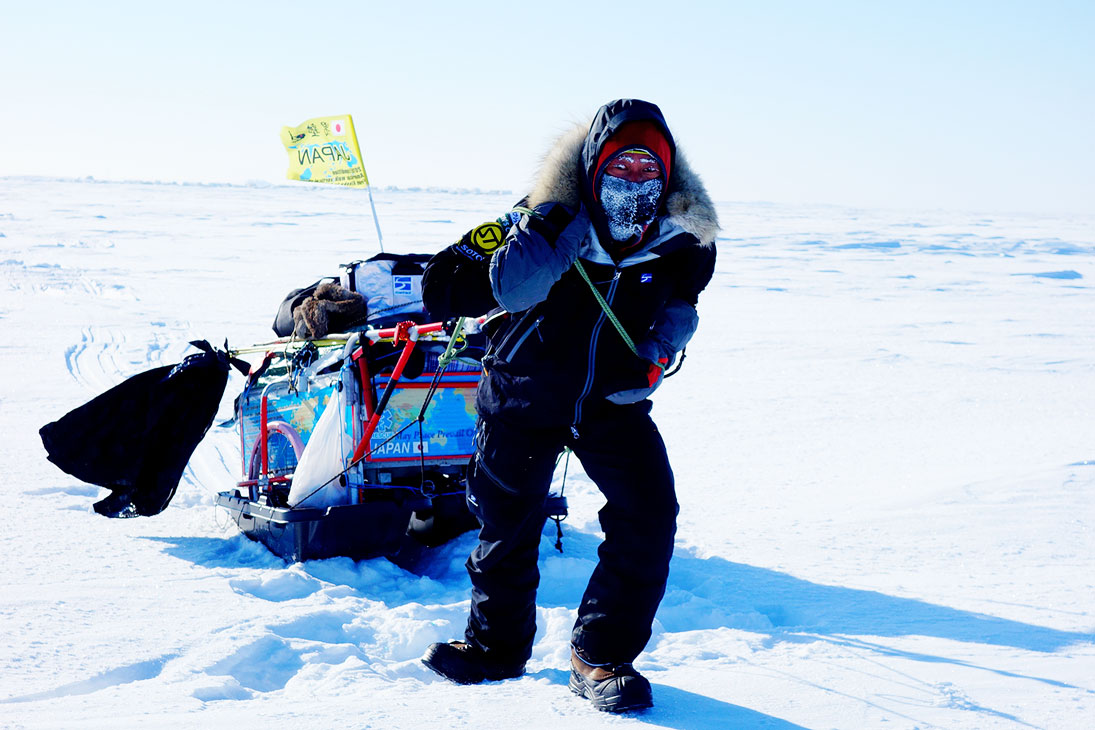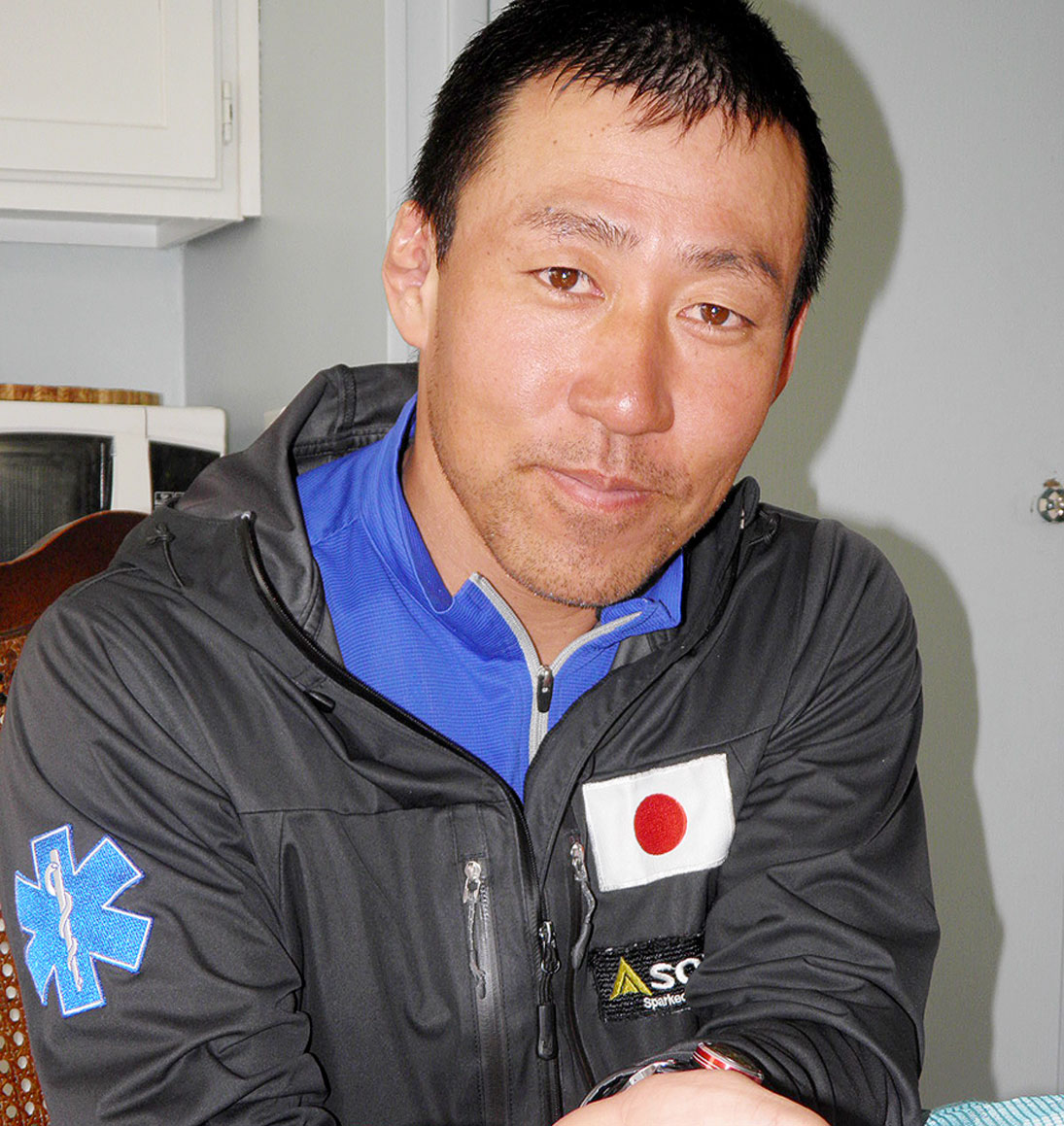
Photo by Photo Submitted
A LIGHT SHOW TO REMEMBER – Spectacular aurora scenes were among the many experiences Norio Sasaki encountered as he camped during his memorable northern odyssey. Photos copyright 2017, NORIO SASAKI

Photo by Photo Submitted
A LIGHT SHOW TO REMEMBER – Spectacular aurora scenes were among the many experiences Norio Sasaki encountered as he camped during his memorable northern odyssey. Photos copyright 2017, NORIO SASAKI

Photo by Photo Submitted
COLD BUT BREATHTAKING – Norio Sasaki makes his way along the Tuktoyaktuk ice road, backdropped by February’s setting sun. The ice road will give way to an all-weather highway later this year. Photos copyright 2017, NORIO SASAKI

Photo by Photo Submitted
AN ENDLESS RIBBON – Norio Sasaki is seen hauling his riyaka cart during his amazing northern challenge. He paced the length of the Dempster Highway in February, reaching Inuvik and Tuktoyaktuk, N.W.T., and venturing onto the Arctic Ocean ice. Photos copyright 2017, NORIO SASAKI

Photo by Photo Submitted
Norio Sasaki Photos copyright 2017, NORIO SASAKI
In an era where paraplegic ascents of sheer granite faces in Yosemite are successfully undertaken,
In an era where paraplegic ascents of sheer granite faces in Yosemite are successfully undertaken, and Everest’s North Face with a live adult yak on each shoulder are considered moderately feasible, what challenges remain unanswered for ambitious Guinness World Record aspirants?
The Yukon may have just witnessed something truly unique and unprecedented.
Having hauled his riyaka the entire length of the Dempster Highway in the relatively benign warmth of late summer a couple of years ago, a true shot at Yukon immortality demanded the reverse trip during the coldest, darkest and most forbidding days of the year, in mid-February.
By his own admission, Japan’s Norio Sasaki finally acknowledged an element of fear for his own survival had crept in as relentless gale-force winds, unaffected by the treeless Eagle Plains, buffeted his tiny one-man tent under -40 C temperatures, the true wind-chill unregistered on his tiny, cracked thermometer.
Extricating himself from the warmth of his sleeping bag to photograph the auroral displays overhead didn’t register a second thought. For the Japanese, the aurora takes on special significance.
As the leader of his local support crew, now comfortably ensconsed in the calcium-laden +40 C mineral waters of the Ichino-yu onsen in Norio’s home prefecture of Hyogo in northern Japan, I vicariously sensed his discomfort!
Two days into his 910-kilometre solo trek, near the entrance to Tombstone Park, the -35C temperatures were to warn of the true risks ahead.
Seal shrinkage and embrittlement of the rubber gasket on his single-burner stove triggered a fuel leak that set his tent lining and the sleeve of his Finetrack sponsor’s jacket aflame.
Quickly doused, there was now only the fear of predatory bears and heavily-laden 18-wheelers pancaking his roadside campsite to ease his insomnia.
His primary motivation on this trek was to experience the glissade of his cart’s wheels across the near-frictionless surface of the ice road to Tuktoyaktuk before its decommissioning this fall with the completion of the all-season alternative route.
Once he made it beyond Inuvik, a mere advisory road sign indicating road closure barely hindered his progress north.
Thirty early dawn press-ups proved the easiest way of regaining circulation drained by overnight lows and allowing tent repacking.
He was soon to establish a routine of glove dynamics that minimized the risk of loss of essential digits.
Dehydrated ramen noodles as a staple, chocolate and cookie bars stripped of their wrapping to lighten the load were typically enough caloric intake to power a 40-kilometre daily trek.
Those long-haul truckers not berating him for camping too close to their road would stop to proffer thermos flasks and sandwiches close to their freeze-by date.
A banana skin cast onto the ice road would be their idea of irony!
Locally-sourced protein in the form of barren-ground caribou supplemented his intake as he accepted the hospitality of Gwich’in hunters.
This would be virtually his only concession to the concept of “assistance” along the way, and a chance to recharge failing headlamp batteries that until then maintained a charge only from body heat as he maintained forward momentum.
Sasaki laughed at the recollection of his “busy pockets” that absorbed his kinetic energy.
Proudly low-tech in their design, but supremely thermally efficient, feet shrouded in bubble-wrap fought off frostbite successfully.
His achievement extends a rare Japanese tradition as he was to discover upon crossing the border on the run into Inuvik.
(A transfer weigh station relayed that his cart, now unladen of 30 days of food and fuel, was down to a mere 80 kilograms!)
Unknown to him, a famed predecessor, Naomi Uemura (the first man to solo-trek to both poles) had visited the same territorial border region, 40 years earlier, and made the acquaintance of the father of the young First Nations man who now served him tea from a rusting camp mug.
Diverting only to ascend one of the pingos that pock the patterned ground, his first view of the frozen Arctic Ocean provided some perspective on the immensity of the challenge of crossing the wasteland beyond, punctured by impenetrable pressure ridges of broken ice.
Sasaki managed a more-than-creditable seven kilometres, his riyaka wheels cradled by hastily-assembled sled runners.
Bear-bangers and a flapping garbage bag served as his only protection against unwelcome visitors. His non-Canadian status denied him the use of a rifle.
“Because it’s there” may be the over-used George Mallory-attributed alpinist’s cliché.
Sasaki’s calm demeanour and unaffected humility belies the answer to the question of “why?”
If you need to ask, then you would likely never fully appreciate the answer.
As he boarded his connection for the final leg of his trans-global trek, onwards to Patagonia and points south, we shared a thought as to why the Yukon was his preferred choice of return to the Americas after a brief return to his native Japan.
He confessed that the scenery had got its claws into him (alongside a local Yukon lady, it seems, who will now accompany him on his travels for a while).
Who needs a live yak as a burden when you have a whiff of perfume for moral support?
The writer is a Whitehorse technical author. See related photo, p. 7.
By PETER ION
Special to the Star
In order to encourage thoughtful and responsible discussion, website comments will not be visible until a moderator approves them. Please add comments judiciously and refrain from maligning any individual or institution. Read about our user comment and privacy policies.
Your name and email address are required before your comment is posted. Otherwise, your comment will not be posted.
Comments (1)
Up 2 Down 1
Arnie on Apr 21, 2017 at 5:18 pm
Helluva story. Not sure I could do that even in the middle of summer. Or in a vehicle for that matter!